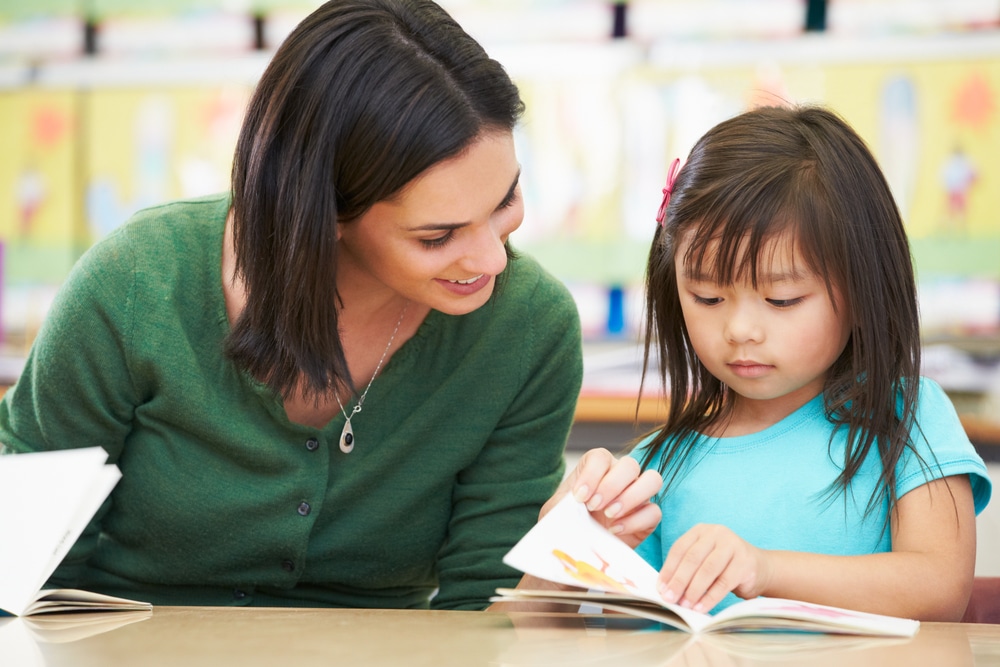Reading should be fun – not just part of the school’s curriculum. Unless children become excited about books, they’re unlikely to become readers for life. So how exactly do you encourage reading for pleasure, when there’s a tendency for kids to associate books with ‘un-fun’ things like schoolwork and assessments?
We’ve done the research for you and found the Top 5 ways you can encourage your children to read for pleasure, both in and out of the classroom.
Different ways of reading
The advancement of technology means we no longer need to rely on physical copies of a book. We can enjoy all formats including hardbacks, paperbacks, ebooks, and audiobooks. Students have different abilities and preferences, so let them choose the best design for their mood. Get them to use smartphones and tablets for ebooks, and remember, these can be adapted to each student’s specific needs. You may have a pupil who needs a larger font on the screen or fewer lines per page to enhance their reading ability.
Pupils may find that paperback books are intimidating because of the word count, the font size, or even how thick the book is; therefore, using a variety of formats will help them enjoy it and even get them reading for pleasure. Ebooks are perfect to suit this kind of tailoring. With children having different reading abilities, retelling the story to the class or giving recommendations can also be difficult. Using the Dinosaurs Tale Tote, pupils can use this to discuss the plots, characters and ideas that they may have heard read on an ebook or even listened to on an audiobook.

Set a target
Sometimes the only way to motivate students is by setting them a target and achieving prizes. So why not set them a reading-based challenge? Can they read 10 books in a category of their choice before turning 10? Books can include classic novels, comics, famous books, etc. You can then decide whether there’s a prize at the end. Maybe have a sticker chart so you can keep track of how many books each child has read, and so they can see themselves how many books they have read—seeing the chart may motivate children to keep reading, not just in the classroom.
You can even have your class retell their stories using puppets from the Minibeasts Tale Tote and stimulate roleplay.
Not only will this get them reading more books, but it will also get students reading a wider variety of them, improving their English skills, and reducing stress. And, if your students reach their target of 10 books before they turn 10 years old, then give them another challenge – increase the number of books they must read, and in turn, increase the value of the prize. These reading-based challenges and doing them consistently will eventually make your students enjoy reading for pleasure.
Time to read every day
Giving your students time to read every day has several benefits. Even if it’s for 15 minutes in the morning before the day starts. Having them read in the morning is a great way to ensure that books and reading are regular, familiar, and fun experiences. It improves students’ concentration, gets them ready to start the day, and helps to calm them down first thing in the morning.
If you don’t have time in the mornings to have reading time, then set some time up throughout the day. Whether this is a dedicated time or at different times each day, children should read every day. Let your students control their reading with your support and encouragement. Once students are used to reading consistently, you’ll find children reaching for books in their social time more often and reading independently.
Create a reading wall
One of the most engaging ways to encourage children to read for pleasure is by having a dedicated wall in your classroom for reading. Once pupils have read a book they enjoyed, create a poster for the wall. Get their creative juices flowing and have them draw a picture to describe the book. Turn it into a ‘wanted’ poster where they must describe and illustrate the book so other students can look for it. Pupils can get inspiration for their posters and illustrations from our Wild Animals Tale Tote by using what’s included and recreating the story.
These posters on the wall will encourage other students to read what their peers are reading. Another thing to add to the wall is quotes. From any book students have read, they can think of their favourite quote to put on the wall.
Students can also add their recommendations to the reading wall. You could make a section on the wall where children can put their favourite books and why they recommend them. This will get them to describe and talk about the book and improve their literacy skills. To add to this, you can put in a 5-star rating system. You could add pictures of the books pupils have read to rate it out of 5 stars.
Incorporating all of this onto a reading wall will encourage and motivate children to read various books and genres. It gets them talking and encourages students to read for pleasure, both in and out of school.

Class reading
A great way of encouraging students to read for pleasure is by reading together as a class. Read books to your children who are beyond their reading ability – this allows you to draw them deeper into the world of fiction and introduce them to more challenging themes and ideas. This will inspire them to keep reading independently.
You can also have a few options and let your class vote on which book they would like to read together. Take volunteers to read with you – you can even encourage them to put on their voices to match the character; bring out their personalities. Seeing their peers do this might make some children improve their confidence to do the same!
One thing to ensure is making story times cosy and memorable. Allow children to sit or lie comfortably so they feel as relaxed as possible, maybe even turn the light low or wear your story cape and sit in the storytelling chair! If you would like more ideas on how to set up a comfortable reading space, check out our reading corners blog! Whatever you do, make this time sacred and special, whether they are reading independently or together as a class.
With World Book Day just around the corner we know how difficult it is to encourage reading and books through all subjects. So, if you’re struggling with some cross-curricular activities for your classroom, then check out Inspiring Cross-Curricular Ideas for World Book Day.
For more enjoyable activities check out these resources below:
To understand why Storytelling is so important for children through the benefits it brings, read our blog here!